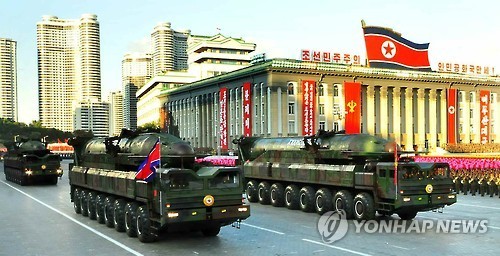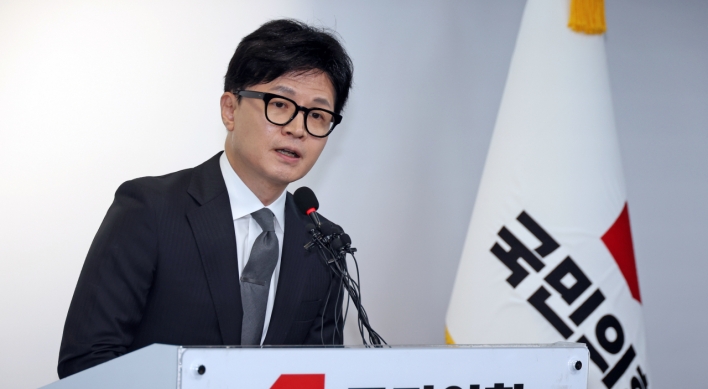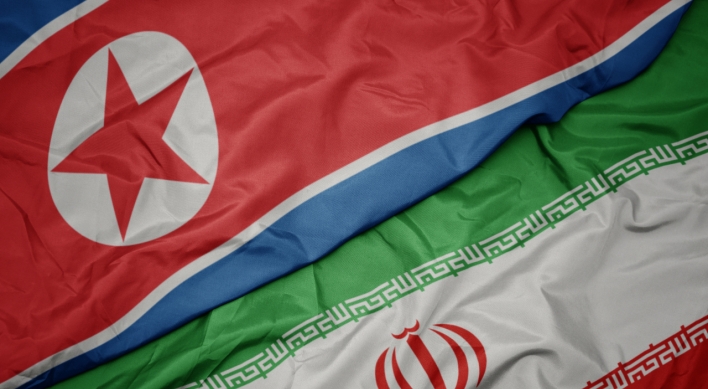NK moving solidly toward nuclear 'second strike capability'
By KH디지털2Published : Feb. 24, 2017 - 09:16
North Korea's latest missile test shows the communist nation is moving solidly toward perfecting capabilities to strike back with a nuclear weapon if it comes under a nuclear attack, a US expert said Thursday.
The North carried out the missile launch on Feb. 12 in its first provocative act since the inauguration of US President Donald Trump. Pyongyang said the launch represented a successful test of a newly developed intermediate-range missile powered by solid fuel, calling it the Pukguksong-2.

Scott LaFoy, an expert on satellite imagery and Korean Peninsula issues, said that the launch imagery released by the North showed that the missile is "a medium-diameter solid-propellant system that is cold launched from a canister atop a tracked transporter erector launcher."
"This means the PGS-2 will likely have a launch prep time of between 15 and 45 minutes, as opposed to the hour or more an equivalently-sized liquid-propellant system may need," LaFoy said in an article posted at Beyond Parallel, a North Korea-focused website run by the Center for Strategic and International Studies.
The North's missile requires no additional fuel trucks, reducing the number of moving vehicles and people that could tip off surveillance systems to an impending launch, he said. In addition, it has a tracked TEL, giving the North more launch location options as it can travel on rugged mountainous areas of the country, he added.
"The DPRK is sending the message that it is moving towards a domestically-produced survivable second strike capability, something that would contribute towards a credible North Korean deterrent against its neighbors and opponents," LaFoy said.
Other nuclear powers, such as China, Russia and India, rely on solid propellant mobile missiles to ensure a strategic deterrent that is "hard to track and fast to launch" in an effort to increase the survivability of their strategic missile systems, he said.
"The PGS-2, especially when paired with the submarine-launched PGS-1, may mark the beginning of North Korea's transition away from liquid propellant missiles, which are both slower to launch and easier to track than solid propellant systems," the expert said.
Should the North bolster its Strategic Missile Force with solid propellant missiles of all ranges, including intercontinental ballistic missiles, its neighbors "could not reasonably rely on being able to destroy missile launch systems in the moments before they launch."
"This will instead either deter neighbors, forcing them to accept the DPRK's position, balance with additional offensive systems, or push the onus of defense onto politically sensitive ballistic missile defense systems like Terminal High Altitude Air Defense," he said.
Marine Corps Gen. Joseph Dunford, chairman of the Joint Chiefs of Staff, expressed concern about the North's increasing capabilities.
"In North Korea, clearly we see now a combination of both intercontinental ballistic capability as well as the effort to put a nuclear warhead on that intercontinental ballistic missile," Dunford said during a Brookings Institution event Thursday.
"So, North Korea not only threatens South Korea, not only threatens the region but now presents a threat to the homeland as well," he said (Yonhap)


![[Exclusive] Korean military set to ban iPhones over 'security' concerns](http://res.heraldm.com/phpwas/restmb_idxmake.php?idx=644&simg=/content/image/2024/04/23/20240423050599_0.jpg&u=20240423183955)

![[Graphic News] 77% of young Koreans still financially dependent](http://res.heraldm.com/phpwas/restmb_idxmake.php?idx=644&simg=/content/image/2024/04/22/20240422050762_0.gif&u=)



![[Pressure points] Leggings in public: Fashion statement or social faux pas?](http://res.heraldm.com/phpwas/restmb_idxmake.php?idx=644&simg=/content/image/2024/04/23/20240423050669_0.jpg&u=)









